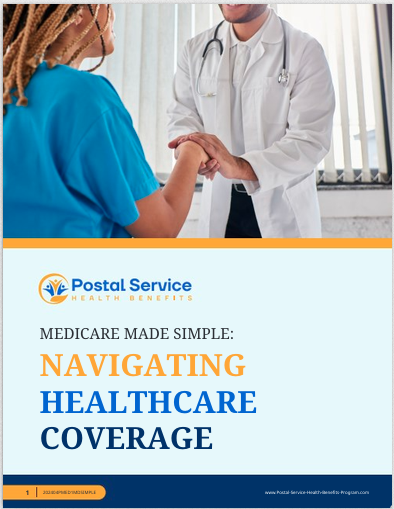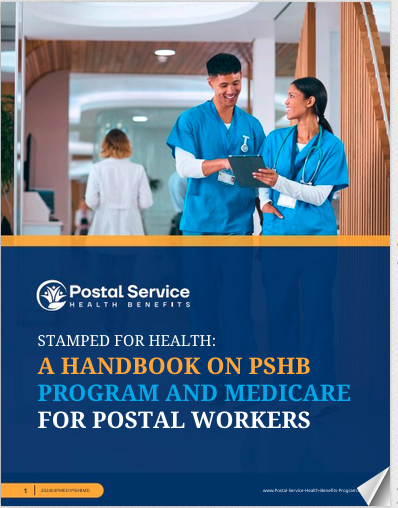Key Takeaways
-
The Postal Service Health Benefits (PSHB) program replaces the Federal Employees Health Benefits (FEHB) program for postal workers in 2025, requiring all postal employees, retirees, and eligible family members to enroll in a PSHB plan to maintain health coverage.
-
Medicare integration plays a significant role for retirees, offering cost-saving opportunities but also requiring careful planning and enrollment to avoid penalties.
Understanding the PSHB Transition
In 2025, the Postal Service Health Benefits (PSHB) program officially replaces the Federal Employees Health Benefits (FEHB) program for postal workers. This change impacts active employees, retirees, and their eligible family members. If you’re part of this transition, it’s crucial to understand what’s changing and what actions you need to take to ensure uninterrupted health coverage.
Key Differences Between PSHB and FEHB
The PSHB program is designed specifically for postal workers, with distinct features compared to FEHB:
-
Eligibility: PSHB covers only Postal Service employees and their families, unlike FEHB, which included all federal employees.
-
Plan Options: While many plans remain similar, PSHB offerings are tailored for postal workers, often providing benefits like reduced out-of-pocket costs for those enrolled in Medicare.
-
Integration with Medicare: Medicare-eligible retirees must enroll in Medicare Part B to maintain PSHB coverage, except for specific exemptions.
Understanding these differences helps you navigate the enrollment process and choose the right plan for your needs.
Enrollment Deadlines You Can’t Miss
Enrollment in PSHB isn’t automatic for everyone, so mark your calendar with these critical timelines:
-
Initial Enrollment Period: For employees and retirees transitioning from FEHB, the initial PSHB enrollment occurred during Open Season from November 11 to December 13, 2024. Changes made during this period are effective January 1, 2025.
-
Special Enrollment Periods: Life events like marriage, childbirth, or retirement allow changes outside Open Season. Be sure to report qualifying life events promptly to adjust your coverage.
Failing to enroll on time could leave you without health coverage, so it’s essential to stay on top of these deadlines.
Medicare Part B Enrollment Requirements
One of the most significant changes under PSHB is the requirement for Medicare-eligible retirees and family members to enroll in Medicare Part B. This integration aims to reduce overall healthcare costs and improve coverage. However, you need to be aware of the following:
-
Mandatory Enrollment: If you’re 65 or older and eligible for Medicare, you must enroll in Medicare Part B to maintain your PSHB plan, unless you qualify for specific exemptions.
-
Avoiding Penalties: Medicare Part B late enrollment penalties can be steep, increasing your premium by 10% for each year you delay enrollment. Make sure to sign up during your Initial Enrollment Period for Medicare (three months before and after your 65th birthday month).
By coordinating Medicare with PSHB, you can minimize out-of-pocket costs and maximize your benefits.
What Happens to Prescription Drug Coverage?
PSHB plans include a Medicare Part D Employer Group Waiver Plan (EGWP) for Medicare-eligible retirees and their families. This integration simplifies your prescription drug coverage:
-
Automatic Enrollment: If you’re eligible, your PSHB plan automatically provides Part D coverage, reducing your out-of-pocket drug costs.
-
Out-of-Pocket Cap: In 2025, Medicare introduces a $2,000 annual cap on out-of-pocket drug expenses, eliminating the dreaded “donut hole.” This cap offers significant financial relief.
Make sure to check your plan’s formulary to ensure your prescriptions are covered and understand the costs associated with your medications.
Maximizing Benefits for Active Employees
If you’re an active postal worker, PSHB offers robust coverage tailored to your needs. Here’s how to make the most of your plan:
-
Preventive Care: Take advantage of no-cost preventive services like annual checkups, immunizations, and screenings. Staying proactive about your health can prevent costly medical issues later.
-
Specialized Plans: Review the available plans to find one that fits your family’s needs, whether it’s comprehensive coverage or a lower-premium option with higher deductibles.
Comparing plans and understanding your healthcare needs is essential to ensure you’re getting the best value.
Special Considerations for Retirees
Retirees transitioning to PSHB need to pay particular attention to Medicare integration and plan selection:
-
Medicare Premium Reimbursements: Some PSHB plans offer partial reimbursement for Medicare Part B premiums. Check if your plan provides this benefit to offset costs.
-
Waived Deductibles: For those enrolled in Medicare, many PSHB plans waive deductibles, further reducing out-of-pocket expenses.
These cost-saving features make it worthwhile to evaluate plans carefully and take full advantage of the available benefits.
Cost Implications to Keep in Mind
Healthcare costs can be a significant part of your budget, so understanding the financial aspects of PSHB is vital:
-
Premiums: While premiums vary by plan, they are competitive and often lower than comparable FEHB plans due to Medicare integration.
-
Out-of-Pocket Costs: With features like the $2,000 cap on drug expenses and waived deductibles for Medicare enrollees, PSHB plans are designed to reduce your financial burden.
-
Government Contributions: The government continues to cover a significant portion of your premiums, keeping your costs manageable.
Being aware of these cost factors helps you make informed decisions and avoid unexpected expenses.
Navigating the Enrollment Process
The PSHB enrollment process is straightforward but requires attention to detail:
-
Review Plan Options: Use the PSHB comparison tool to evaluate available plans based on your healthcare needs and budget.
-
Complete Enrollment: During Open Season or a Special Enrollment Period, submit your enrollment form through the designated online portal or by contacting your HR office.
-
Verify Coverage: Once enrolled, review your confirmation notice to ensure all details are correct and your coverage matches your selection.
Taking these steps ensures a smooth transition to PSHB and uninterrupted health benefits.
Common Pitfalls and How to Avoid Them
The PSHB transition can be confusing, and mistakes may lead to gaps in coverage or unexpected costs. Here’s how to avoid common issues:
-
Missed Deadlines: Keep track of enrollment periods and submit your application on time.
-
Incorrect Plan Selection: Carefully review plan details, including premiums, deductibles, and coverage, to choose the best option for your needs.
-
Failure to Enroll in Medicare Part B: Understand the mandatory requirements and enroll promptly to avoid penalties and loss of coverage.
Staying organized and informed can help you navigate the process without complications.
Preparing for the Future of PSHB
The PSHB program represents a significant shift in healthcare coverage for postal workers, but it also brings opportunities for better, more tailored benefits. By understanding the program’s features and requirements, you can make informed decisions that benefit you and your family.
Planning Ahead for Your Health
As you navigate the PSHB transition in 2025, staying proactive is key. Whether you’re an active employee or a retiree, understanding your plan’s benefits and requirements ensures you’re making the most of your healthcare coverage. Don’t wait until the last minute—start exploring your options today to secure a healthier future.






